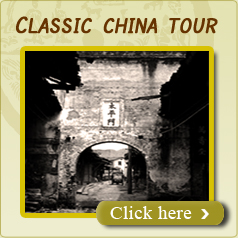Macau Tourism

-
Province:Macau (Chinese: 澳门 , Pinyin: Ao Men)
-
Population :557,000
-
Area :32.8square km (426 square mile)
-
Overview:Macau is the real deal when it comes to East meets West style. It's mixture of East and West brings together an eclectic mix of Old World Europe and the Orient in one beautiful.
Overview
Macau is the real deal when it comes to East meets West style. It's mixture of East and West brings together an eclectic mix of Old World Europe and the Orient in one beautiful package. Portuguese traders leased Macau from the Guangzhou Macau for more than 440 years until returning it back to China in 1999. Macau still maintains its Portuguese-style and coupled with the numerous Mediterrranean buildings, it feels as Eurpopean as it does Chinese.
Know more
A brief history
History of Macau can be traced back to Qin Dynasty (221–206 BC), when the region now called Macau came under the jurisdiction of Panyu county, in Nanhai prefecture (present day Guangdong). The first recorded inhabitants of the area were people seeking refuge in Macau from invading Mongols during the Southern Song Dynasty. Under the Ming Dynasty (1368–1644 AD), fishermen migrated to Macau from Guangdong and Fujian provinces.
Macau did not develop as a major settlement until the Portuguese arrived in the 16th century. In 1535, Portuguese traders obtained the rights to anchor ships in Macau's harbours and to carry out trading activities, though not the right to stay onshore. Around 1552–1553, they obtained temporary permission to erect storage sheds onshore, in order to dry out goods drenched by sea water; they soon built rudimentary stone houses around the area now called Nam Van. In 1557, the Portuguese established a permanent settlement in Macau, paying an annual rent of 500 taels of silver.
Portugal occupied Taipa and Coloane in 1851 and 1864 respectively, following the Opium War (1839–42). On December 1, 1887, the Qing and Portuguese governments signed the Sino-Portuguese Treaty of Amity and Commerce, under which China ceded the right of "perpetual occupation and government of Macau by Portugal" in compliance with the statements of the Protocol of Lisbon. In return, Macao Government would cooperate with Hong Kong's smuggle of Indian opium and China would be able to increase profits through customs taxes.
In 1928, after the Qing Dynasty had been overthrown following the Xinhai Revolution, the Kuomintang (KMT) government officially notified Portugal that it was abrogating the Treaty of Amity and Commerce; the two powers signed a new Sino-Portuguese Friendship and Trade Treaty in place of the abrogated treaty. Making only a few provisions concerning tariff principles and matters relating to business affairs, the new treaty did not alter the sovereignty of Macau and Portuguese government of Macau remained unchanged.
In June 1986, the Chinese and Portuguese governments commenced negotiations on the question of Macau. The two signed a Sino-Portuguese Joint Declaration the next year, making Macau a special administrative region (SAR) of China. The Chinese government assumed formal sovereignty over Macau on 20 December 1999. The economy since then has continued to prosper with the sustained growth of tourism from mainland China and the construction of new casinos.
Must see

Built in the 1602 by Jesuit priests, the Ruins of St.Paul's Cathedral was destroyed by fire in 1835, and only the massive stone facade survived. Today the Ruins of St.Paul's Cathedral are the official symbol of Macau......more

casinos of Macau are well-known in the world and with a long history. Macau is one of the few Asian cities, where gambling is legalized, and now it is the only one city in China where casinos are legal. .....more

A-Ma Temple is reputedly the place in Macau where the Portuguese first landed, and is the starting point of this historical exploration. It is famous for its history and culture relics.....more





